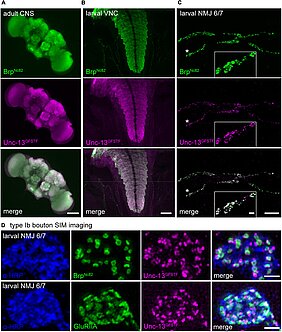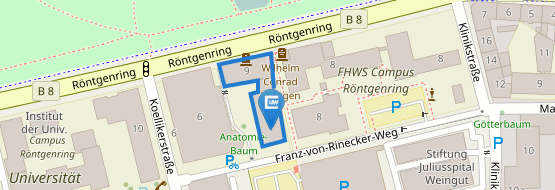Endogenous tagging of Unc-13 reveals nanoscale reorganization at active zones during presynaptic homeostatic potentiation
14.12.2022Endogenous tagging of Unc-13 reveals nanoscale reorganization at active zones during presynaptic homeostatic potentiation
SvenDannhäuser, Achmed Mrestani, Florian Gundelach , Martin Pauli, Fabian Komma, Philip Kollmannsberger, Markus Sauer, Manfred Heckmann, Mila M. Paul (2022)
Frontiers in Cellular Neuroscience, 10.3389/fncel.2022.1074304
Introduction: Neurotransmitter release at presynaptic active zones (AZs) requires concerted protein interactions within a dense 3D nano-hemisphere. Among the complex protein meshwork the (M)unc-13 family member Unc-13 of Drosophila melanogaster is essential for docking of synaptic vesicles and transmitter release.
Methods: We employ minos-mediated integration cassette (MiMIC)-based gene editing using GFSTF (EGFP-FlAsH-StrepII-TEV-3xFlag) to endogenously tag all annotated Drosophila Unc-13 isoforms enabling visualization of endogenous Unc-13 expression within the central and peripheral nervous system.
Results and discussion: Electrophysiological characterization using two-electrode voltage clamp (TEVC) reveals that evoked and spontaneous synaptic transmission remain unaffected in unc-13GFSTF 3rd instar larvae and acute presynaptic homeostatic potentiation (PHP) can be induced at control levels. Furthermore, multi-color structured-illumination shows precise co-localization of Unc-13GFSTF, Bruchpilot, and GluRIIA-receptor subunits within the synaptic mesoscale. Localization microscopy in combination with HDBSCAN algorithms detect Unc-13GFSTF subclusters that move toward the AZ center during PHP with unaltered Unc-13GFSTFprotein levels.


